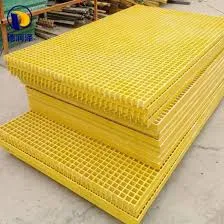
-
 Afrikaans
Afrikaans -
 Albanian
Albanian -
 Amharic
Amharic -
 Arabic
Arabic -
 Armenian
Armenian -
 Azerbaijani
Azerbaijani -
 Basque
Basque -
 Belarusian
Belarusian -
 Bengali
Bengali -
 Bosnian
Bosnian -
 Bulgarian
Bulgarian -
 Catalan
Catalan -
 Cebuano
Cebuano -
 China
China -
 China (Taiwan)
China (Taiwan) -
 Corsican
Corsican -
 Croatian
Croatian -
 Czech
Czech -
 Danish
Danish -
 Dutch
Dutch -
 English
English -
 Esperanto
Esperanto -
 Estonian
Estonian -
 Finnish
Finnish -
 French
French -
 Frisian
Frisian -
 Galician
Galician -
 Georgian
Georgian -
 German
German -
 Greek
Greek -
 Gujarati
Gujarati -
 Haitian Creole
Haitian Creole -
 hausa
hausa -
 hawaiian
hawaiian -
 Hebrew
Hebrew -
 Hindi
Hindi -
 Miao
Miao -
 Hungarian
Hungarian -
 Icelandic
Icelandic -
 igbo
igbo -
 Indonesian
Indonesian -
 irish
irish -
 Italian
Italian -
 Japanese
Japanese -
 Javanese
Javanese -
 Kannada
Kannada -
 kazakh
kazakh -
 Khmer
Khmer -
 Rwandese
Rwandese -
 Korean
Korean -
 Kurdish
Kurdish -
 Kyrgyz
Kyrgyz -
 Lao
Lao -
 Latin
Latin -
 Latvian
Latvian -
 Lithuanian
Lithuanian -
 Luxembourgish
Luxembourgish -
 Macedonian
Macedonian -
 Malgashi
Malgashi -
 Malay
Malay -
 Malayalam
Malayalam -
 Maltese
Maltese -
 Maori
Maori -
 Marathi
Marathi -
 Mongolian
Mongolian -
 Myanmar
Myanmar -
 Nepali
Nepali -
 Norwegian
Norwegian -
 Norwegian
Norwegian -
 Occitan
Occitan -
 Pashto
Pashto -
 Persian
Persian -
 Polish
Polish -
 Portuguese
Portuguese -
 Punjabi
Punjabi -
 Romanian
Romanian -
 Russian
Russian -
 Samoan
Samoan -
 Scottish Gaelic
Scottish Gaelic -
 Serbian
Serbian -
 Sesotho
Sesotho -
 Shona
Shona -
 Sindhi
Sindhi -
 Sinhala
Sinhala -
 Slovak
Slovak -
 Slovenian
Slovenian -
 Somali
Somali -
 Spanish
Spanish -
 Sundanese
Sundanese -
 Swahili
Swahili -
 Swedish
Swedish -
 Tagalog
Tagalog -
 Tajik
Tajik -
 Tamil
Tamil -
 Tatar
Tatar -
 Telugu
Telugu -
 Thai
Thai -
 Turkish
Turkish -
 Turkmen
Turkmen -
 Ukrainian
Ukrainian -
 Urdu
Urdu -
 Uighur
Uighur -
 Uzbek
Uzbek -
 Vietnamese
Vietnamese -
 Welsh
Welsh -
 Bantu
Bantu -
 Yiddish
Yiddish -
 Yoruba
Yoruba -
 Zulu
Zulu
Optimized Carbide Conical Button Bits for Enhanced Rock Drilling Efficiency
Efficient Rock Drilling with Carbide Conical Button Bits
In the ever-evolving world of mining and construction, the efficiency and effectiveness of tools utilized for rock drilling plays a critical role in ensuring successful operations. One such tool that has gained prominence is the carbide conical button bit. These specialized bits are designed for optimal performance in various rock formations and have become crucial for industries that demand precision and durability.
Carbide conical button bits are characterized by their unique conical shape and hardness. The main component, tungsten carbide, is a highly durable material that withstands wear and tear from abrasive geological conditions. This durability is essential for maintaining the integrity of the bit during intense drilling operations. The use of carbide enhances the bit's lifespan, reducing the frequency of replacements and consequently lowering operational costs.
The conical shape of these bits enables efficient penetration through various rock types, including hard conglomerates and softer sedimentary formations. This geometry not only aids in cutting through tough materials but also improves the stability of the drilling operation. The design allows for better hole straightness and reduced deviation, leading to enhanced accuracy in drilling depth and angle. As a result, contractors and miners can achieve the desired outcomes with minimal effort, leading to increased productivity.
One of the standout features of carbide conical button bits is their versatility. These bits are ideal for a wide range of applications, including exploration drilling, underground mining, and various construction projects. Their adaptability to different drilling rigs and systems makes them a preferred choice in many sectors. Whether the task involves creating boreholes for blasting or establishing infrastructure, these bits provide a reliable solution to meet specific performance requirements.
carbide conical button bits designed for efficient rock drilling

Additionally, the design of carbide conical button bits contributes to improved flushing capabilities during drilling. Flushing refers to the process of removing rock cuttings from the drill hole, which is essential for maintaining drill bit efficiency. With optimized flushing channels integrated into the bit design, operators can ensure a more effective removal of debris, preventing clogs that could lead to downtime. This feature translates into uninterrupted drilling cycles, further enhancing operational efficiency.
Furthermore, the development of advanced manufacturing techniques has made it possible to produce carbide conical button bits with greater precision and consistency. Modern technology allows for meticulous control over the shape and hardness of the bits, ensuring they meet the stringent demands of drilling operations. As a result, customers can expect high-quality tools that perform reliably under various conditions.
In recent years, the emphasis on sustainability has also influenced the mining and construction industries' approach to tool selection. Carbide conical button bits, with their extended service life and efficient performance, contribute positively to environmental considerations. By reducing the frequency of bit replacements, there is a decrease in waste generation. Moreover, the efficient drilling capabilities help in minimizing energy consumption and resource displacement, aligning with sustainable operational practices.
In conclusion, carbide conical button bits stand out as indispensable tools in the field of rock drilling. Their efficient design, robust material composition, and adaptability make them essential for a variety of applications. As the mining and construction sectors continue to demand higher productivity and sustainability, the innovation and effectiveness of carbide conical button bits will undoubtedly play a pivotal role in shaping the future of these industries. By investing in quality tools, businesses can optimize their drilling operations, achieve significant cost savings, and maintain a competitive edge in an increasingly challenging market.









